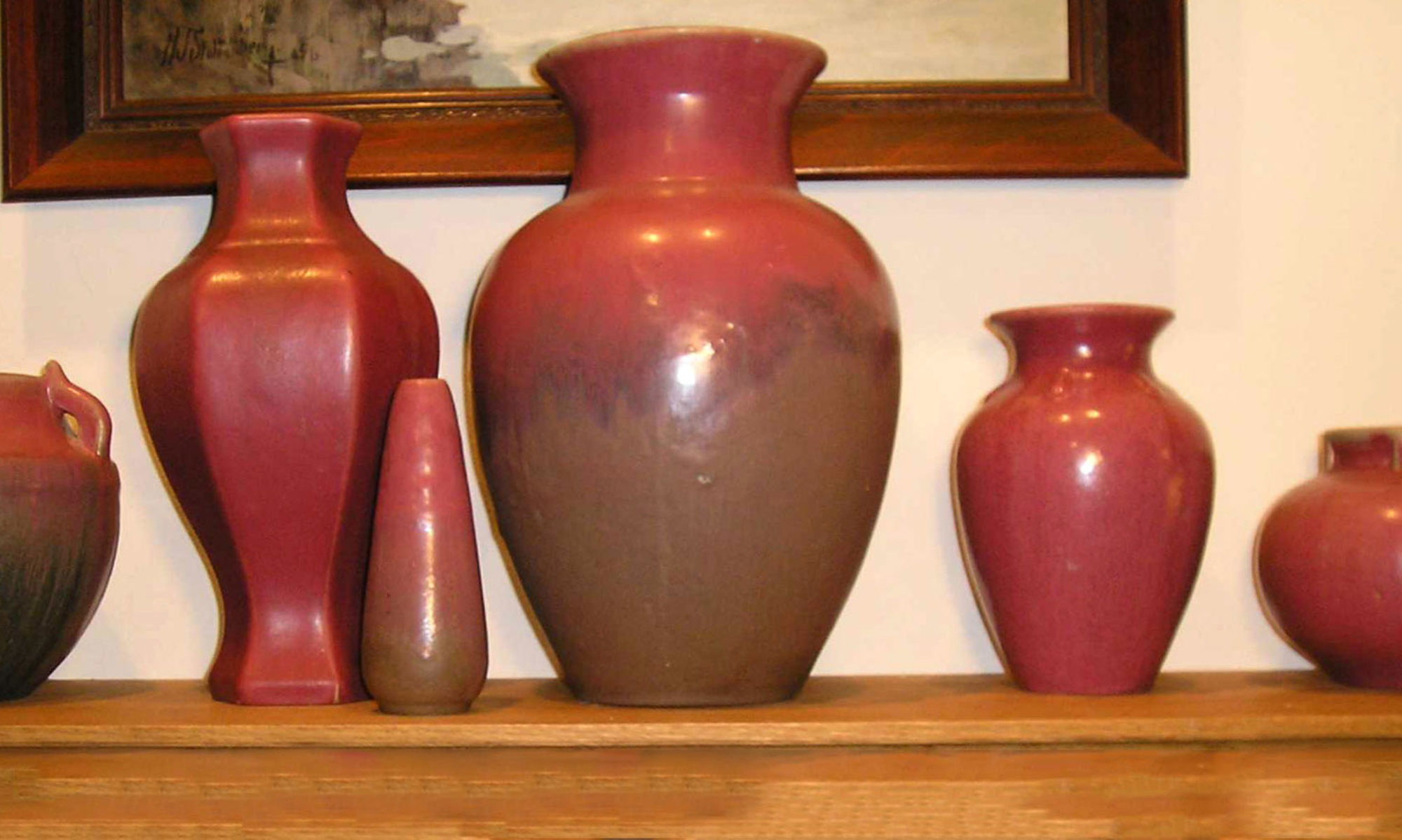Factors that determine the monetary value of Roseville pottery
DEMAND by collectors is the most important factor for determining the value of Roseville. The more people who want an item, the greater the demand (and cost). Demand for Roseville varies by line, color and form, and often changes as styles and tastes change.
SUPPLY (availability on the market or rarity) interacts with demand by collectors to determine value. There is a limited supply of Roseville because it is no longer being manufactured, many pieces were broken and discarded, and many are “tied up” in collections. Collectors pay more for rare items in high demand, but rare objects in low demand do not necessarily command high prices.
Some Roseville LINES are in greater demand than others; for example, Pine Cone generates more excitement among collectors than Florane. Most Roseville lines came m more than one COLOR, and within a line, some colors tend to be preferred by collectors, e.g., blue Pine Cone has a higher resale value than green Pine Cone, other things being equal. SIZE AND FORM correlate with rarity and demand, but not perfectly. In general, larger Roseville vases tend to cost more than smaller ones, again, other things being equal. Some forms are in demand because of their aesthetic appeal or because they are relatively rare, while others are just in demand; for example, most Roseville wall pockets are fairly common but tend to have a relatively high value for their size.
CONDITION Damaged pottery is worth less than the same item in mint condition; the more damage it has, the less it is worth relative to a mint example. Professional restoration can increase the value of damaged pots to about 50% to 90% of a mint item depending on rarity and demand. Less valuable Roseville may not be worth the cost of restoration. Amateur repairs that are difficult to undo (usually involving glue) often decrease the value because the piece will cost more to restore.
QUALITY OF PRODUCTION refers to several factors including molding, color (glaze), and factory flaws. Examples with sharp, well-defined molding look better than the same item from worn molds, which appear less three-dimensional. In addition, Roseville often varies in the quality of color or glaze applied in manufacturing. Some examples have more intense color, or may have less of a desired color (for example, the blue shading at the bottom of the Sunfower line), or the colors may be mis-applied in the making. Factory flaws include kiln separations, glazed over factory chips, glaze misses, glaze pops, sandy surfaces, and so on. Factory flaws that detract from an item’s appearance will decrease value, but unobtrusive factory flaws should not.
WATERSHED PRICES attract the attention of all antique dealers. With Roseville, an extreme auction result can increase the value of an entire line. While supply and demand may eventually pull prices back down to reality, some sellers continue to set their prices at the higher levels.
Should I buy a piece of Roseville with damage or restoration? In the past, most collectors did not buy damaged or restored pieces; today, as availability decreases and demand grows, many collectors buy imperfect items. Some eventually replace these with mint examples, others are content with a piece that “looks good on the shelf,” especially if it was a bargain. This decision depends on the individual, how badly the item is wanted, its rarity, and the reasonableness of the cost relative to a mint item.
“How much should I pay for a specific piece of Roseville?” or “is Aunt Fanny’s funny old umbrella stand with the sunflowers worth anything, or should I just put it out on the curb with the trash?” The Roseville books cited in today’s program list prices for the pottery in their photographs, and there are also price guides without illustrations. At best, price guides offer a range of reasonable values; none are infallible, some are better than others, and all become outdated. Tips:
Consult more than one price guide, track prices realized on internet auctions, always use recent information, and remember: condition and quality of production influence the value of specific pieces.
Excellent, in-depth treatment of the above factors (and more) are found in Monsen’s Collectors’ Compendium of Roseville Pottery (two volumes to date) and in Bassett’s Introducing Roseville Pottery. The Bomms’ book Roseville in All Its Splendor is also very useful for pricing because of the huge number of forms and models that are included in the photos. All of these books include price guides.
See our recommended Roseville Pottery Books
Related Pages:
Roseville America’s Decorative Art Pottery – Wisconsin Pottery Association’s 1999 Exhibit
Recommended Roseville Pottery books

